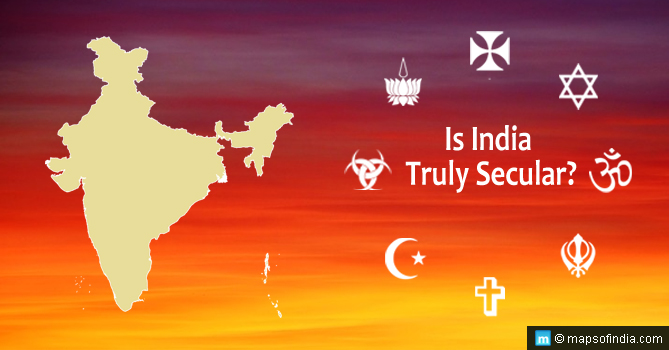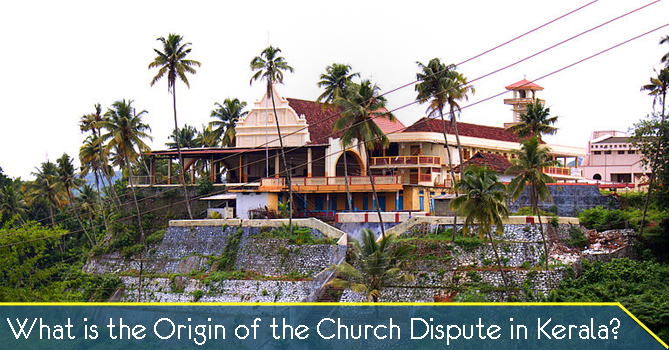
Yes, India is a secular country. In fact, it is this idea that has kept India united and the country hasn’t yet fallen apart despite the vast diversity. Let’s take a closer look at the journey to secularism, hiccups on the path, and the possibility of a more united India.
Unity in Diversity
“Secularism” is not just a word but a belief system that holds India as “One Entity” despite having so much diversity. It is this secular fabric of India that has made “Unity in Diversity” a reality.
To put it into perspective, let’s start with the definition of India as put forward by the Father of the Nation Mahatma Gandhi:
“I do not expect India of my dreams to develop one religion, i.e. to be wholly Hindu or wholly Christian or wholly Mussalman, but I want it to be wholly tolerant, with its religions working side by side with one another.”
Secularism: A Historical Perspective
The idea of secularism didn’t pop up suddenly. It emerged as the mantra of the Indian nation after years of struggle and debate. “Secularism” became the dominant principle of the nation as India was exhausted by the sectarian riots and the scars of Independence. In 1947, two dominion states (India and Pakistan) were born consequent to a pact for independence from British India.
While Pakistan chose to become an Islamic state, India under the leadership of Mahatma Gandhi, Jawaharlal Nehru, Maulana Abul Kalam Azad, Vallabhbhai Patel, Netaji Subhash Chandra Bose, B. R. Ambedkar, and others chose the path of secularism. The founding fathers of India represented different sections of the aspiring population of India. Despite defining the idea of secular state in their own ways, they struggled together to come up with the idea of a secular state that is enshrined in the Indian Constitution.
Idea of Secularism: East vs West
The concept of Indian secularism didn’t develop in the same manner as in the western countries.
In the west, the idea of secularism came up mainly out of the State-Church conflict. However, in India, the idea of secularism came up out of a necessity for sustaining religious and cultural pluralism.
Our founding fathers sought to end religious and communal strife between the communities, so that India doesn’t have to face yet another partition. After years of struggle, the word “secularism” was adopted in the Preamble to the Constitution with the 42nd Amendment Act in the year 1976.
Blots of Communal Strife: Hiccups in the Path towards a More Cohesive and United India
As we wait to celebrate 73rd Indian Independence Day on August 15, 2019, the idea of secularism has been tested many times. Many communal riots between communities have challenged Hindu-Muslim unity, the most essential pillar of our progressive national movement. Reconstructing India after independence, especially after two centuries of exploitation by the British Raj, is not an easy task.
The unity of Indian people and the true credentials of secular, democratic India have been challenged by the anti-secular, anti-social, and opportunist elements of the society and the political class from time-to-time.
Here are some of the major communal riots that independent India has witnessed:
– Gujarat communal riots (September–October 1969): One of the deadliest Hindu-Muslim violence independent India has witnessed.
– Anti-Sikh Genocide of 1984: It killed thousands of innocent Sikhs after the assassination of the then PM Indira Gandhi.
– Killing of Kashmiri Pundits and their Exodus (1989-1990): 300,000-500,000 Kashmiri pundits have fled their Kashmir homes since
March 1990. This was after Islamic fundamentalists killed 300 Kashmiri Pundits during September 1989 to 1990.
– Babri Masjid Demolition in 1992 and Bloody Aftermath: Over 1,000 people died following the demolition of Babri Masjid by Hindu communal forces.
– Mumbai Riots of 1992-93: Around 700 people died during December 1992 to January 1993, after riots broke out between Hindus and Muslims following the demolition of Babri Masjid.
– Gujarat Riots (2002): A 3-day inter-communal violence in Gujarat that left 1,044 dead, 2,500 injured, and 223 missing.
These are only the major ones. There are many other attacks on Hindus, Muslims, Christians, and many other communities (beyond the scope of this article) that stained the secular fabric of India with blood.
Conclusion
India’s secular credentials have surely been tested many times. However, these incidents don’t define the secular nature of India, which has been earned over the years. The path towards peace and harmony is not smooth and will never be a bed of roses. The struggle towards a better, developed, united, and cohesive India will continue.
Modern Indian history has shown us that India has emerged as a stronger and more cohesive nation every time communal forces have tried to test the secular foundations. India is still a truly secular nation. The united people (irrespective of class, creed, or community) working persistently to guard the secular values of this country will surely emerge victorious against the communal and divisive forces, trying incessantly to weaken the idea called Secular India.
Related Link:




